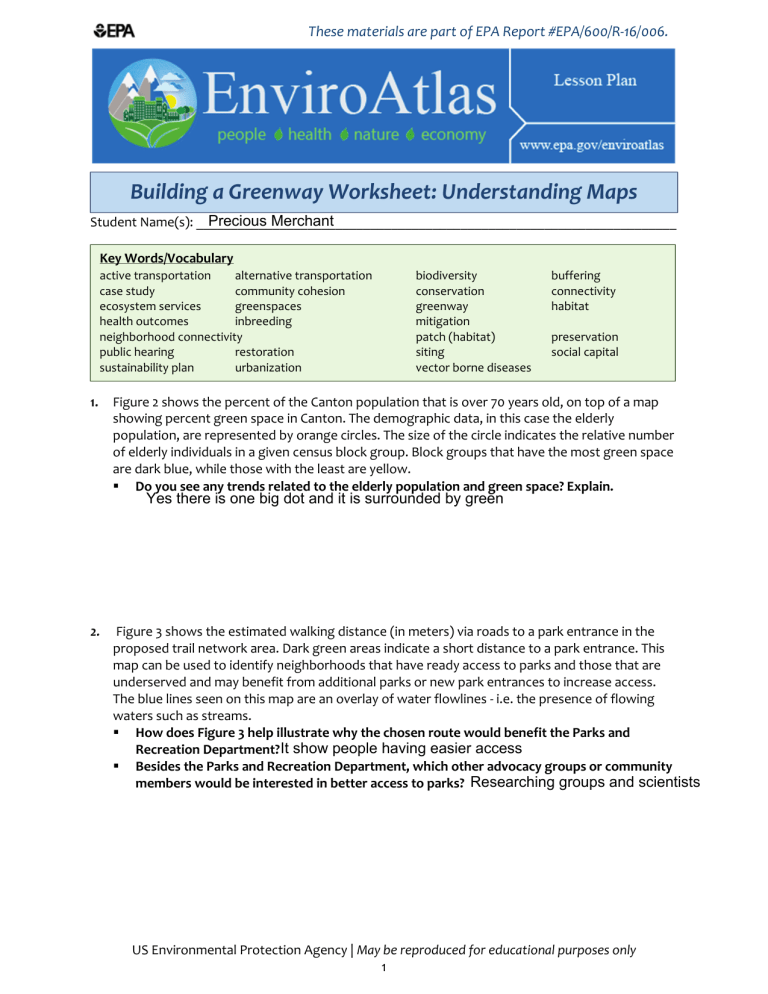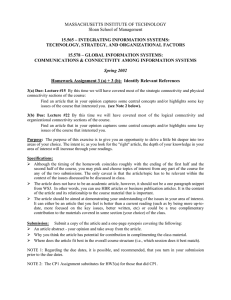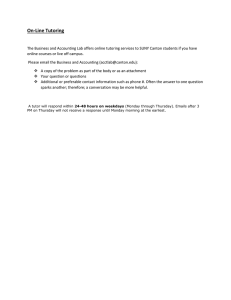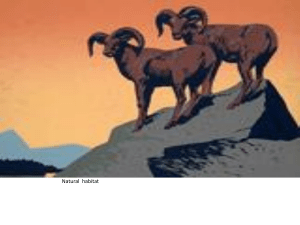
These materials are part of EPA Report #EPA/600/R-16/006. Building a Greenway Worksheet: Understanding Maps Precious Merchant Student Name(s): _____________________________________________________________________ Key Words/Vocabulary active transportation alternative transportation case study community cohesion ecosystem services greenspaces health outcomes inbreeding neighborhood connectivity public hearing restoration sustainability plan urbanization 1. biodiversity conservation greenway mitigation patch (habitat) siting vector borne diseases buffering connectivity habitat preservation social capital Figure 2 shows the percent of the Canton population that is over 70 years old, on top of a map showing percent green space in Canton. The demographic data, in this case the elderly population, are represented by orange circles. The size of the circle indicates the relative number of elderly individuals in a given census block group. Block groups that have the most green space are dark blue, while those with the least are yellow. Do you see any trends related to the elderly population and green space? Explain. Yes there is one big dot and it is surrounded by green 2. Figure 3 shows the estimated walking distance (in meters) via roads to a park entrance in the proposed trail network area. Dark green areas indicate a short distance to a park entrance. This map can be used to identify neighborhoods that have ready access to parks and those that are underserved and may benefit from additional parks or new park entrances to increase access. The blue lines seen on this map are an overlay of water flowlines - i.e. the presence of flowing waters such as streams. How does Figure 3 help illustrate why the chosen route would benefit the Parks and Recreation Department? It show people having easier access Besides the Parks and Recreation Department, which other advocacy groups or community members would be interested in better access to parks? Researching groups and scientists US Environmental Protection Agency | May be reproduced for educational purposes only 1 It will make sure the environment will have what they need 3. Figure 4 shows the connectivity of the natural land cover, with water included as background. Connectivity describes the ways in which a landscape promotes or impedes movement among core areas of potential habitat or cover. Connectivity is important to the concept of green infrastructure, which is used in land and water quality management. How might connectivity be important in the selection of the pilot section of the greenway? Is the proposed pilot section the best choice for increasing connectivity? Explain. Yes so the environment can stay in their area and we can also stay in our guidelines and not endanger them 4. Figure 5 shows the land cover classification for the area of interest in Canton. Land cover data are necessary for sound urban planning and sustainable development. There are 8 land cover classes: Water, Impervious Surface, Soil and Barren, Trees and Forest, Grass and Herbaceous, Agriculture, Woody Wetlands, and Emergent Wetlands. Looking at Figure 5, what is the most common land cover type in Canton? Core and bck round land How might the land cover affect where a trail would be placed? Think about current It could flood or cause terrain problems developed land and the presence of local businesses. 5. Figure 6 shows the residential population not within 500m of a park entrance, summarized by census block group. This map uses some of the same information as Figure 3, but takes the presence of people into account and is summarized by block group. The summaries by census block group can be used to evaluate park access per capita. When overlaid with socio-economic layers within EnviroAtlas, these maps can highlight park proximity for specific age groups or other demographic groups for whom access could be especially beneficial. Would the proposed pilot route increase park access to those who have little access comparatively? How? yes, Because it wold be more accessible 6. Figure 7 shows the street intersection density in the area of interest in Canton. Intersection density is the number of intersections per sq. mile. Higher intersection density is typically associated with smaller blocks, which are more walkable. When considering where to construct the pilot and subsequent trails, how might intersection density and walkability affect placement? It makes people less tired. US Environmental Protection Agency | May be reproduced for educational purposes only 2


